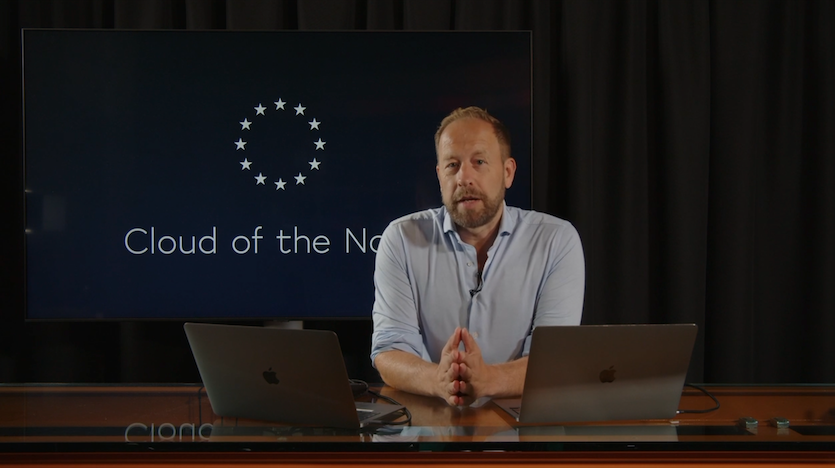The Importance of CDN and Cloud-Independent Software Architecture for Continuity
Last updated: 11 October 2023

The streaming industry is rapidly changing. Some vendors are struggling, or deciding to discontinue services. Like very recently Microsoft Azure Media Services, StackPath CDN and Lumen CDN. We expect more parties to change course, selling their businesses, consolidating, divesting services, or even shutting down. Vendors are overinvested, failing to meet growth targets, and having to make heavy cuts. What to do if you have made yourself completely dependent on such a supplier? And how do you prevent this from happening in the future?
In the rapidly evolving world of technology and cloud computing, it is crucial for companies to think strategically about their software architecture. One of the most important considerations is avoiding dependence on a single cloud and CDN vendor.
Building a software architecture that is independent of a single cloud or CDN vendor is strategically important to ensure the continuity of your business. Because it protects against price increases, increases flexibility and choice, spreads risk, ensures future-proofing, helps with compliance and improves the redundancy and availability of your systems. It’s an investment that will pay off in the long run and make your business more resilient in an ever-changing technological environment.
In this blog, we will elaborate on why building a cloud-independent software architecture is of strategic importance to ensure the continuity of your business, even when cloud vendors increase their rates, change services or even discontinue their services.
1. Protection against price increases
Cloud and CDN vendors can adjust their rates at any time. When you are completely dependent on one vendor, you are vulnerable to sudden price increases. However, CDN and cloud-independent architecture allow you to negotiate and switch between different vendors to maintain cost efficiency.
2. Flexibility and freedom of choice
By investing in cloud-independent architecture, you retain the freedom to choose the cloud provider that best suits your needs. This allows you to select the most appropriate services and pricing models without being locked into one specific provider.
3. Risk spreading
Dependence on a single cloud provider carries operational risks. For example, if that supplier goes down temporarily or structurally for any reason, it can seriously harm your business. A cloud-independent architecture spreads this risk across multiple vendors, ensuring business continuity.
4. Future-proofing
Technology is constantly evolving and cloud vendors are adapting their services to maintain competitive advantage. With a cloud-independent architecture, you are better prepared for changes in the technology landscape because you can respond more flexibly to new technologies and trends and switch to the vendor that offers the features your customers need.
5. Compliance and legal considerations
Some industries have strict compliance requirements regarding data storage and privacy. By choosing cloud-independent architecture, you can more easily meet these requirements because you have the ability to store data with vendors that meet specific requirements.
6. Redundancy, scale and availability
A cloud-independent architecture can build redundancy by using multiple cloud providers. Thus increasing the availability and scaling of your applications and data, which is essential for business continuity.
How does Jet-Stream facilitate Cloud and CDN independence?
Jet-Stream has 30 years of experience in the streaming market – more than many vendors – and has seen many examples that have built their entire workflow and tech stack on one vendor. Too often we saw vendors fail to innovate through, adjusting their service causing them to break down processes at their clients, have outages or discontinue their service. Thus, resulting in serious threats to the survival of their own service and the company itself. This is often caused by the need to set up a work process too quickly at too low a cost, and at the CTO level not taking dependency and its risks sufficiently into account and relying too much on a single supplier.
1. Knowledge transfer and empowerment
With our knowledge and experience, Jet-Stream transfers knowledge to its customers so that the internal team at the customer can become more knowledgeable about streaming technology and architecture. And thus have a greater grip on their own tech stack that operates vendor-independently, even independently of the Jet-Stream platform.
2. Redundancy and Ease of Migration to the Cloud
Jet-Stream Cloud is designed to be redundant across multiple data centres at multiple vendors. Modern containers and Kubernetes environments make migrating components easier. Migration is then not a headache of many months. Give us racks, servers or virtual servers and an IP range and we can move on.
3. Reduced Dependence on Third-Party Services
Jet-Stream Cloud has a much larger tech stack than before. By developing and hosting more tech in-house, dependence on third-party services has been completely eliminated. Think statistics, player, transcoding and CDN. This makes Jet-Stream much less vulnerable to technical and operational changes, rate increases, outages, or vendor end-of-life.
4. Separation of Control Plane and Delivery Plane
Jet-Stream Cloud‘s software architecture has been designed since 2009 to separate the control plane from the delivery plane. This means that all smart logic runs on a scalable redundant cloud, and all workflows can run on other infrastructures, such as origins, edges, CDNs, transcoders, analytics, and players. This more open architecture allows multiple applications – both Jet-Stream’s and third-party applications – to be deployed per customer, and even allows the customer to easily link its own applications. For example, Jet-Stream can set per customer whether it uses Jet-Stream’s own transcoding service or that of a third-party cloud provider. Or both. If for any reason one service does not fit, it is instantaneous to switch to an alternative service.
5. The Power of Multi-CDN Strategy
A good example of portability is multi-CDN. Jet-Stream obviously has its own serving capacity, with extremely high performance. However building out and managing a global fine-grained distribution network itself is extremely expensive, as is building capacity at peak demand.
To avoid being competed away by CDNs, Jet-Stream incorporated a multi-CDN strategy into its architecture from the beginning. A mix of up to seven CDNs is set up per customer, which is geographically optimized. Active load balancers and smart algorithms choose for each viewer which CDN is the best choice at that moment: the best experience for the viewer, and the lowest price for the customer. Jet-Stream can set various business rules, and the customer can control exactly which CDN is deployed per stream and per video, per region. CDNs compete on coverage, performance and uptime, and price. Moreover, thanks to Jet-Stream’s real-time data portability and content steering, customers enjoy happy viewers, extremely high availability, complete independence and low cost.
6. On-Premises Hosting and Hybrid Environments
Some processes are so critical and strategic for our clients that they prefer to have part of the operation run in-house. For that reason, Jet-Stream is developing more and more technology so that it can also be hosted on-premises. Because “the cloud,” as wonderful as it is, is not sacrosanct. Jet-Stream’s edge servers can be hosted in the customer’s network, as can the MaelStrom Deep Edge transcoding appliance, which is a micro-cloud-in-a-box. In this way, a hybrid environment can be built where there is an optimal mix of proprietary transcoding, proprietary storage, origins, and edges, combined with the cloud.
We hope this blog convinces you that having an independent architecture strategy, working with multiple vendors, is critical for any organization for whom streaming is core business. Also, we hope you see that Jet-Stream, thanks to its 30 years of experience (wised up by trial and error), thinks and operates on a more abstract, holistic level. Are you running into this problem, too? Or would you like to avoid ending up in a lock-in? We’d love to talk it through with you.




